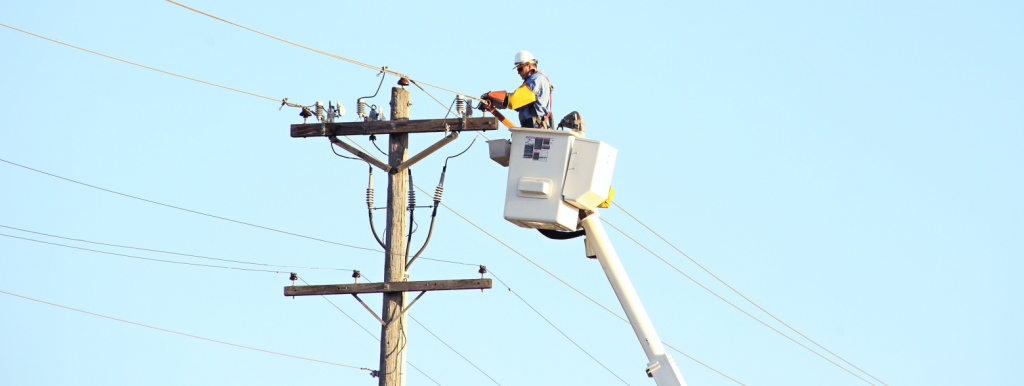What difference does uneven attachment heights in a span make to tension?
We can approach this issue by comparing tensions in two spans identical except for the vertical height difference. Equations are from AS/NZS7000:2016
For this worked example the spans have these common properties:
- Krypton conductor, weight 0.433 kg/m
- Conductor breaking load 37.4 kN
- 60m span
- strung at 10% CBL at 15°C, standard temperature 15°C
Stringing tension at 10% CBL is 3.74 kN = 3740 N
W (mass/meter) = 0.433 × 9.81 = 4.248 N/m
Catenary constant \(C=\frac{H}{W}\tag{R8}\)
C = 880.47 m
Conductor catenary length \(S=\sqrt{\left ( 2C sinh\frac{L}{2C} \right )^{2}+h^{2}}\tag{R21}\)
S = 60.012 m ie only 12mm longer than the span length. Of course the conductor does not hang exactly in keeping with the theoretical prediction due to a number of factors.
Sag \(D \approx \frac{IC}{L}\left ( cosh\frac{L}{2C}-1 \right )\tag{R37}\)
D = 0.5111 m
Back calculating tension \(H=\frac{WL^{2}}{8D}\tag{R12}\)
H = 3739.6 N
Performing the same calculations with the addition of the vertical height difference in the span attachment points of 1.5m gives:
C = 880.47 m S = 60.030 m D = 0.5113 m H = 3738.5 N
You will see that all calculated values are essentially the same within any practical limits for a power line.
To answer the initial query, assuming a level span or having (slightly) uneven attachment heights does not affect tensions.
